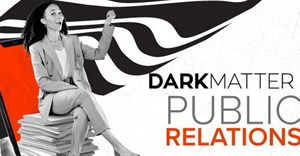Embracing authenticity through flawed visuals

Fast forward to 2024 and the pendulum has swung the opposite way. We have moved on from this very limited and frankly deceptive viewpoint. Newer generations who have grown up with the advent of the internet and a bombardment of media covering every inch of their lives have grown distant to the idea of ‘fake’, and leaned heavily into the ‘real’. Of course the natural progression of the internet led to platforms such as YouTube (maybe more so in its formative years) and TikTok that value and promote user-created content. This wave of authentic (but far less perfect content) has shaped trends that will more than likely reach far into the future. Audiences have started caring far less about what the content looks like, and far more about what it's trying to say. This has had a stark effect on the zeitgeist of modern media and even the art world as a whole. The rise of artists like Banksy and Shepard Fairy are a prime example of this phenomena in full effect.
What does this mean for creative direction today? It means that we have to start being cognisant of the fact that consumers are increasingly drawn to brands that feel relatable, genuine, and imperfect. Studies in psychology suggest that imperfections evoke a sense of warmth and approachability, humanising brands and making them appear more relatable. When consumers see ‘flawed’ visuals, it creates a sense of honesty and transparency, appealing to an audience that increasingly value authenticity over the curated ideal. It is important to note imperfect does not mean bad, it means human. We may think this has made things easier, but it’s not always the case. We now have to walk a knife’s edge in terms of making sure things still look good while keeping clients happy and appealing to the human sides of our audiences. Authenticity is very difficult to fake, humans have had millions of years of social engineering to make sure we know when someone is telling us the truth. Intention now becomes one of the most important tools we can use in our advertising toolkit.
Here are some examples of how the industry has adapted some ways of creating authenticity within their artwork:
Hand-drawn elements
A push to create illustrations and artworks that are done by hand or have elements of mixed media work to help both fight the very polished and often too perfect feel of digital art. This leads to the butting of heads between artists and AI in terms of imagery. AI art is a quick way to kill a brand or campaign looking to build trust amongst consumers. AI art finds itself as the antithesis of authentic art, it is created quickly, cheaply and based off of learned and often copied styles of other artists and creators.
Asymmetry
Artwork is often a dance between artist and composition. There is a certain beauty to symmetry, it fills our heads with suggestions that we can control the chaos of our world, that we as humans have a modicum of a say in what happens to us. Nature however doesn't feel much for symmetry, things grow as they want and the lines of the natural world move in any which way they feel. This means in terms of Art Direction that asymmetry reads as disorderly but also natural, an authenticity that is ingrained deeply into our mammal brains. It is however important to note that as with nature there are still rules to follow and an underlying current that dictates the movement of the waves. This means that the composition can be messy but still thought out, too random and it may seem haphazard and unplanned.
Natural lighting and realistic imagery
This is a big one, as it does often make things a bit tricky. The issue comes in with the prevalent use of stock photography. Stock by its very nature is inorganic and unauthentic, it is made this way to suit the needs of the many but lacks the soul of specific messaging. Another point of contention is the prevalence and ease of access to photo filters on digital apps like Instagram, which have made it easy to hide the imperfections and unwanted creases of life. For truly authentic content you need purpose driven photography with intelligent editing. Again we walk a tight rope here of fixing errors within the photos or images but making sure that the touch is subtle and light keeping the spirit intact.
In summary, the idea of imperfection in modern creative direction moves away from unattainable ideals, acknowledging that authenticity resonates more deeply with audiences who are adept at spotting inauthenticity. Consumers today prioritise honesty and relatability, which purposely flawed visuals effectively communicate. By incorporating hand-drawn elements, asymmetry, and natural lighting, brands can project a human touch that feels genuine, bridging the gap that once might have alienated them from audiences. Authentic design isn’t about neglecting quality but about creating thoughtful visuals that reflect real, lived experiences. This balance between rawness and intentionality fosters trust, making brands more relatable and accessible in an overly curated digital world.
About Anton Pretorius
Anton Pretorius is the executive creative director at DarkMatter.- DarkMatter launches Tears Foundation’s Soothing the Nation campaign07 Jan 11:50
- Embracing authenticity through flawed visuals18 Dec 14:52
- Always-on always delivers11 Nov 12:37
- Master simple, efficient B2B marketing methods with Darkmatter’s free downloadable white paper30 Aug 11:40
- Anti-marketing: The antidote for a dead marketing game06 Aug 13:24






